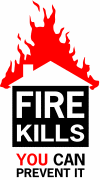ABC of burns. Introduction
- PMID: 15178618
- PMCID: PMC420296
- DOI: 10.1136/bmj.328.7452.1366
ABC of burns. Introduction
Figures









References
-
- Wilkinson E. The epidemiology of burns in secondary care, in a population of 2.6 million people. Burns 1998;24: 139-43 - PubMed
-
- Ryan CM, Schoenfeld DA, Thorpe WP, Sheridan RL, Cassem EH, Tompkins RG. Objective estimates of the probability of death from burn injuries. N Engl J Med 1998;338: 362-6 - PubMed
-
- Fire kills. You can prevent it. www.firekills.gov.uk
-
- Herndon D. Total burn care. 2nd ed. London: WB Saunders, 2002
-
- National Community Fire Safety Centre Toolbox. www.firesafetytoolbox.org.uk
Publication types
MeSH terms
LinkOut - more resources
Full Text Sources
Medical
